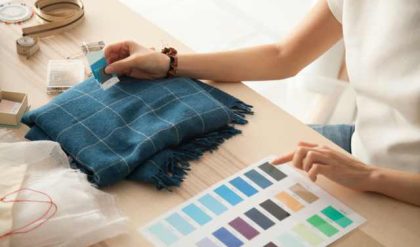Why don’t we use paper bags anymore? Why do we always carry a plastic bag for shopping? What makes these plastics so durable? How’s it that our bags go on for years without any damage? Where do they come from? Plastics come from ‘Synthetic fibres’. In fact, did you know that almost 75% of things we use come from synthetic fibres? But what are synthetic fibres? Let us find out more below.
Synthetic fibres and Semi-synthetic fibres
fibres that are man-made are termed as ‘synthetic fibres’. Mostly these fibres are made using raw materials from petroleum and these materials are known as ‘petrochemicals’. These fibres are made out of small units termed as ‘polymer’ and each polymer is made up of an individual unit known as ‘monomer’.
fibres which are originally deriving from naturally-occurring fibres, and occurring through a chemical process are known as ‘semi-synthetic fibres’. The naturally occurring fibre is harvested, broken down, and then reconstructed. This is usually done using cellulose. Cellulose is a component that is abundant in plants. This cellulose is extracted from the plants, made soluble, and then spun into fibre.
Advantages of Synthetic fibres
· Synthetic fibres have good elasticity.
· They don’t wrinkle up easily.
· Fabrics from synthetic fibres are less expensive, durable and readily available in comparison to natural fibres.
· Synthetic fibres can handle the heavy load without breaking.
· They don’t shrink.
· Synthetic fibres blend well with other fibres.
· They’re very absorbent.
Can you list some more advantages?
Disadvantages of Synthetic fibres
· Synthetic fibres require attention while ironing since they tend to melt away easily.
· Most of these fibres absorb very little and hence it sticks to the body while sweating on hot summer days making it uncomfortable to wear during such days.
· Synthetic fibres are prone to catch fire very easily.
· These fibres are non-biodegradable.
Have you noticed more disadvantages? If so, write them down and add to the list.
Rayon

· Rayon is the first synthetic fibre that was discovered towards the end of the nineteenth century. It comes from the chemical treatment of wood pulp.
· Since rayon is similar to silk but is cheaper than silk, it is therefore called ‘poor man’s silk’.
· Bedsheets and dress materials are made from a combination of rayon with cotton.
· Rayon is soft, absorbent and comfortable.
· Carpets are made from a combination of rayon with wool.
Nylon

· We get the term ‘Nylon’ from the letters of ‘New York’ and ‘London’ and was coined in 1931. Nylon comes from coal, water, and air.
· It is very lustrous, easy to wash and elastic.
· Nylon dries up quickly and maintains its shape.
· Things such as seat belts of the car, sleeping bags, socks, ropes, etc.
Polyester
· Polyester comes from coal, water, air and petroleum.
· It is made from repeating units of a chemical termed as esters.
· It is very easy to wash and it remains wrinkle-free.
· Terylene, a type of polyester is used is making dress materials.
· Polyester maintains its shape and remains crisp.

